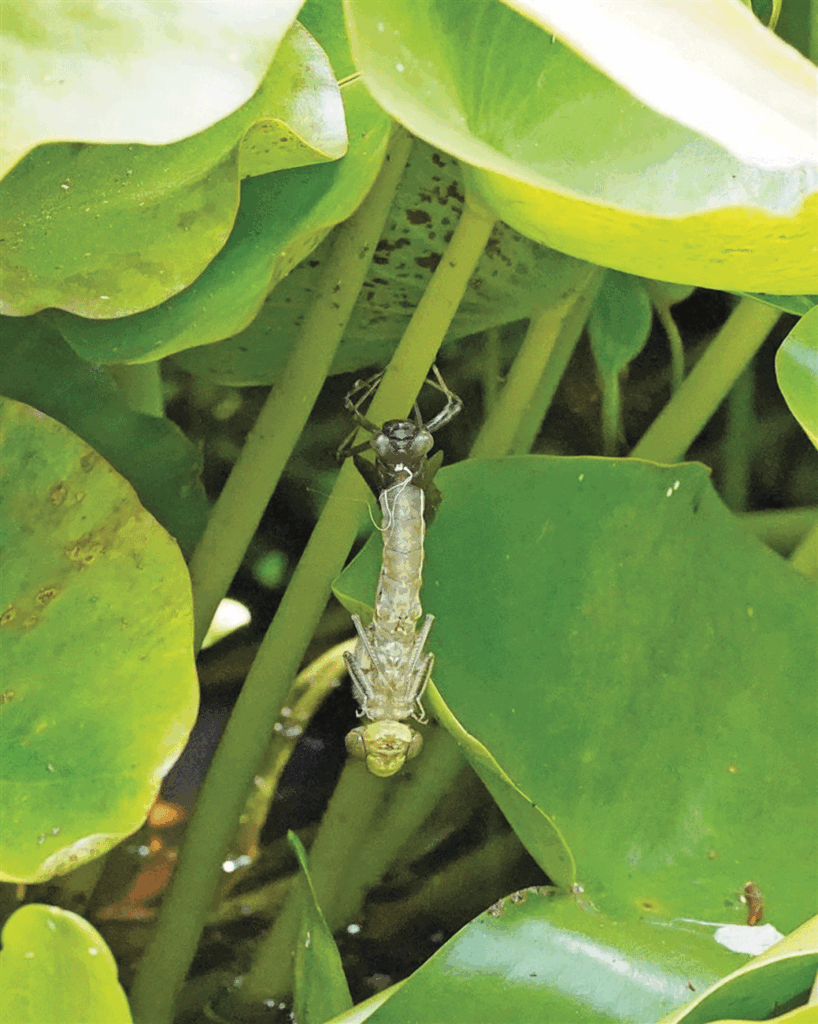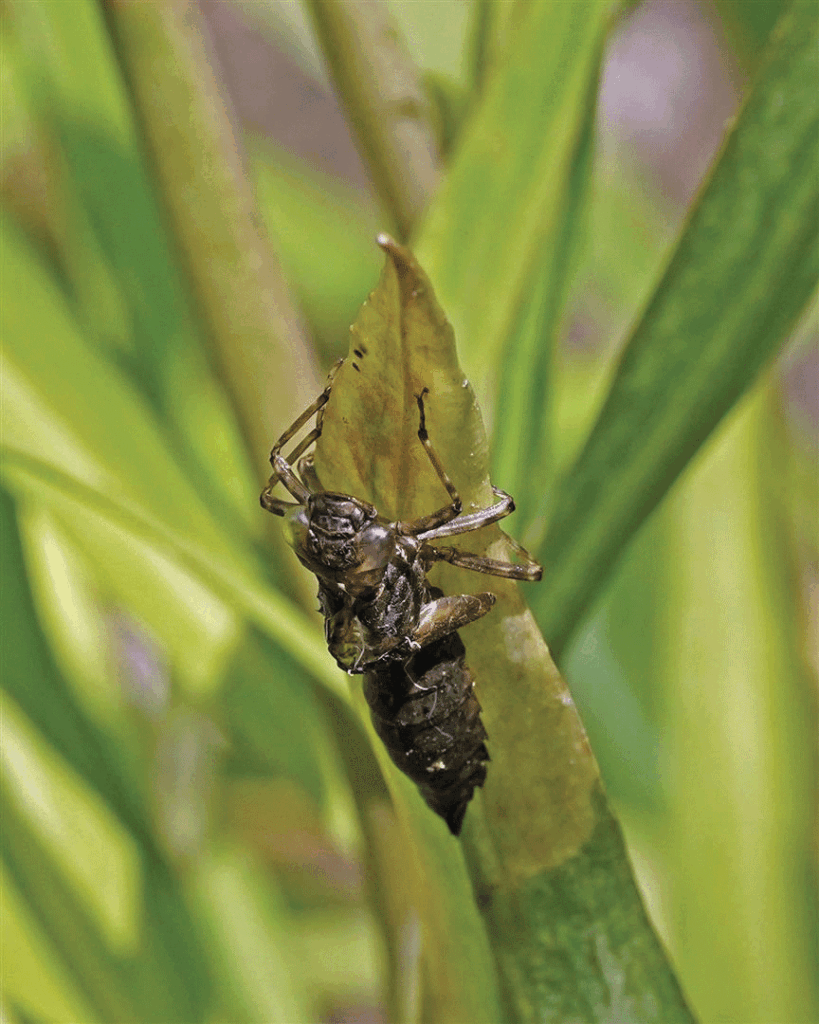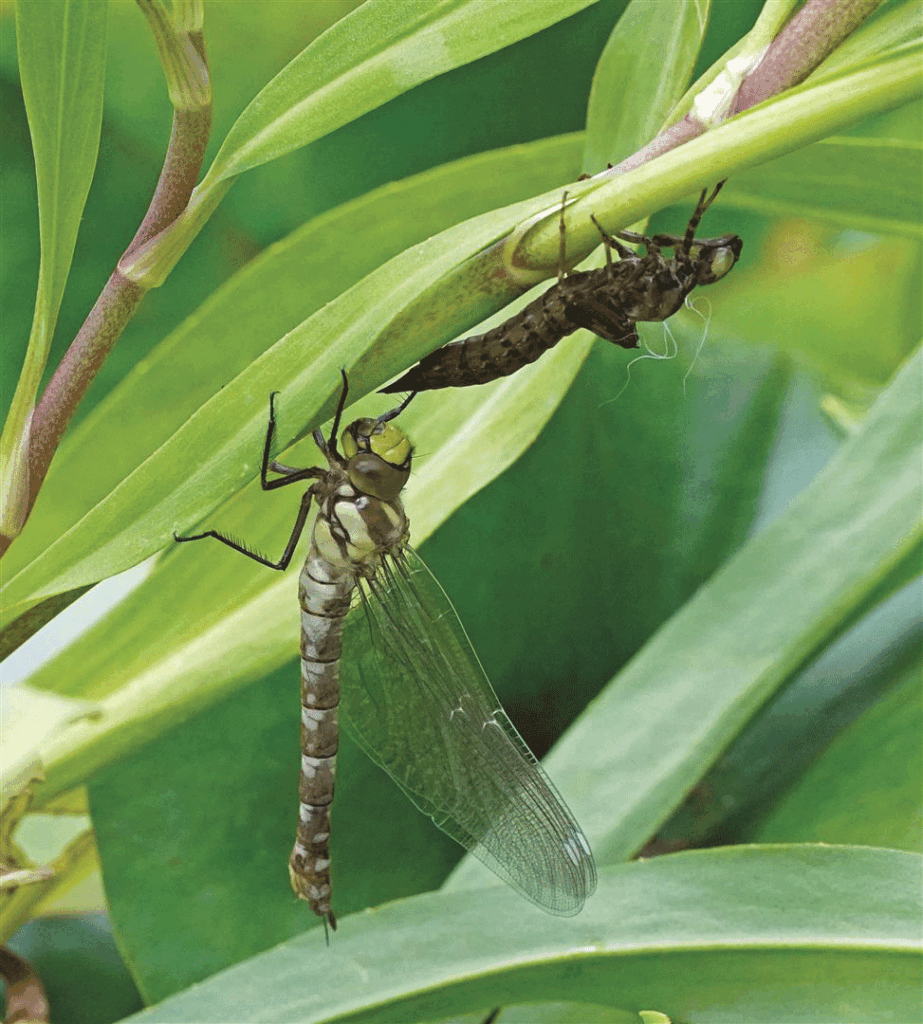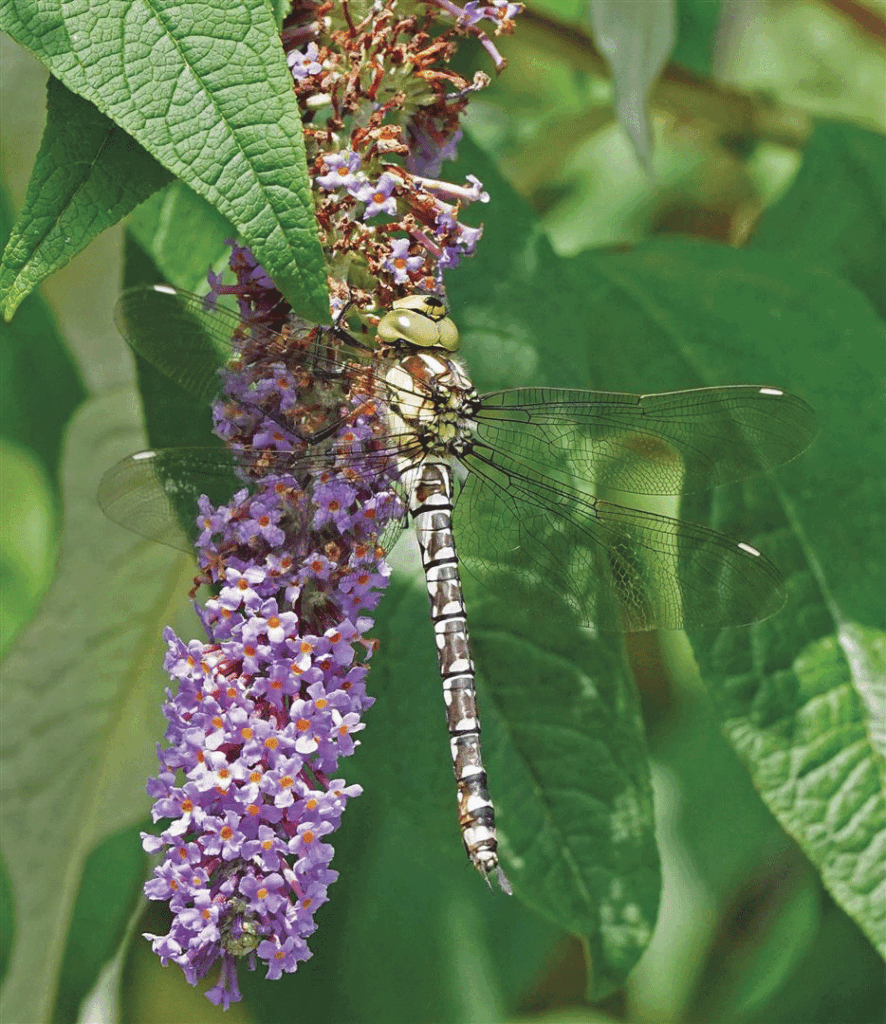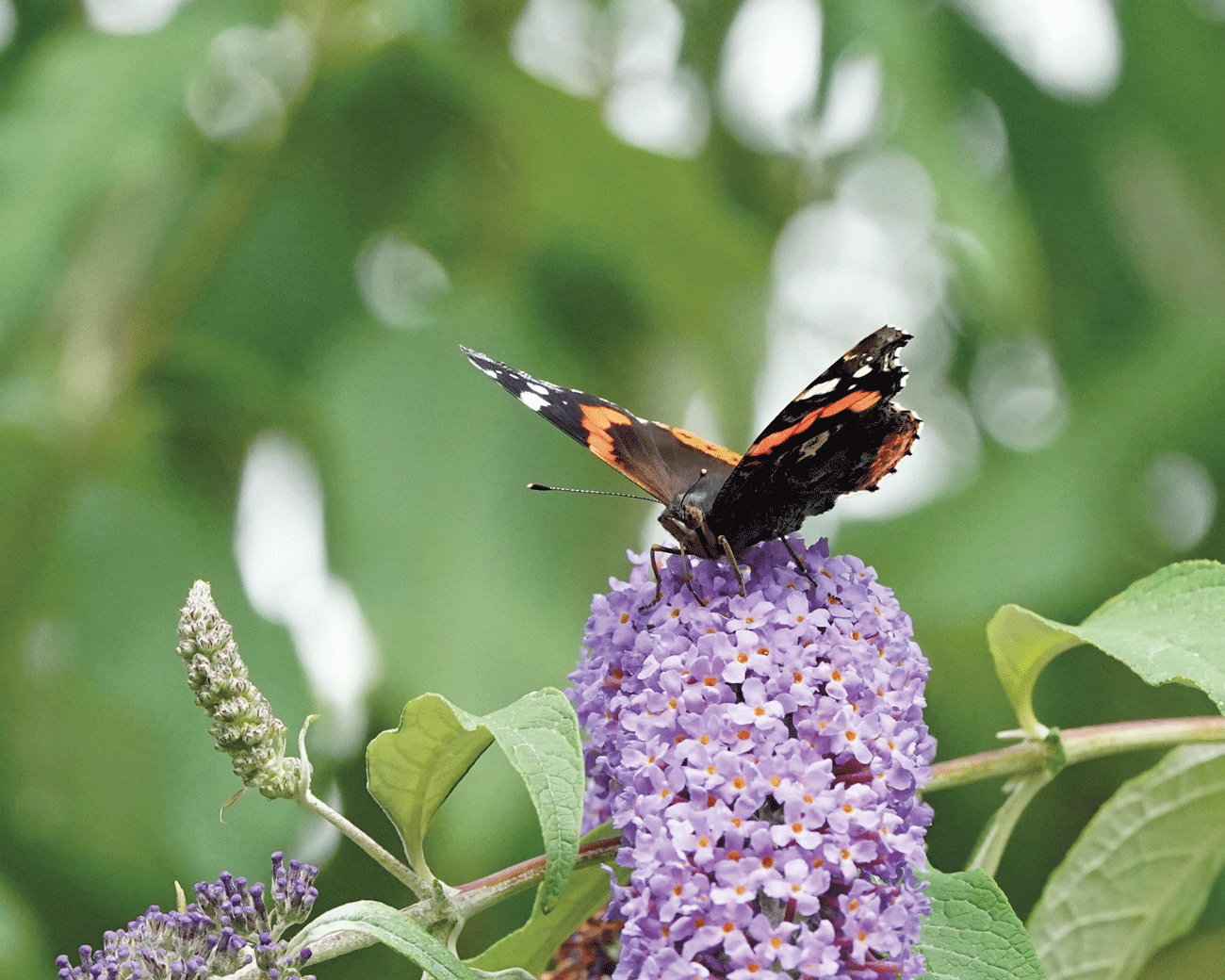
by Miki Marks
Although my garden pond is small, it has recently been the focus of much interest and excitement. One of Nature’s most amazing sights has been taking place, known as metamorphosis. This is a process whereby a creature changes from one form into a completely different one: e.g. tadpole into frog, or chrysalis into butterfly. We were watching the nymphs of the dragonfly emerge from the water and cling to the stems of the aquatic buttercup. The plants had up to 30 stout brown creatures with large eyes and even larger mandibles. They wait for a sunny day and for the conditions to be right before beginning the process of changing into dragonflies.
We watched with fascination as the back on a nymph split and a head emerged. Then slowly a creature edged, upside down, out of the brown casing – and growing in size – until it was difficult to believe that it had been in the larva skin at all. First a head with bulbous eyes, then a torso with limbs. The wings were tightly folded back and finally the tail. As it comes out head down, it has at a crucial stage to do a ‘quick about turn’ and cling to right side up on a stem. The dragonfly then hangs from the stem spreading its double pair of gossamer wings for some time – the empty larva casing by its side. It can be there for up to two or three days – depending on the amount of sunshine. For a couple of days during this process the weather turned very stormy here and it was sad to see dead dragonflies floating in the pond. Many did manage to hatch and buzz away.
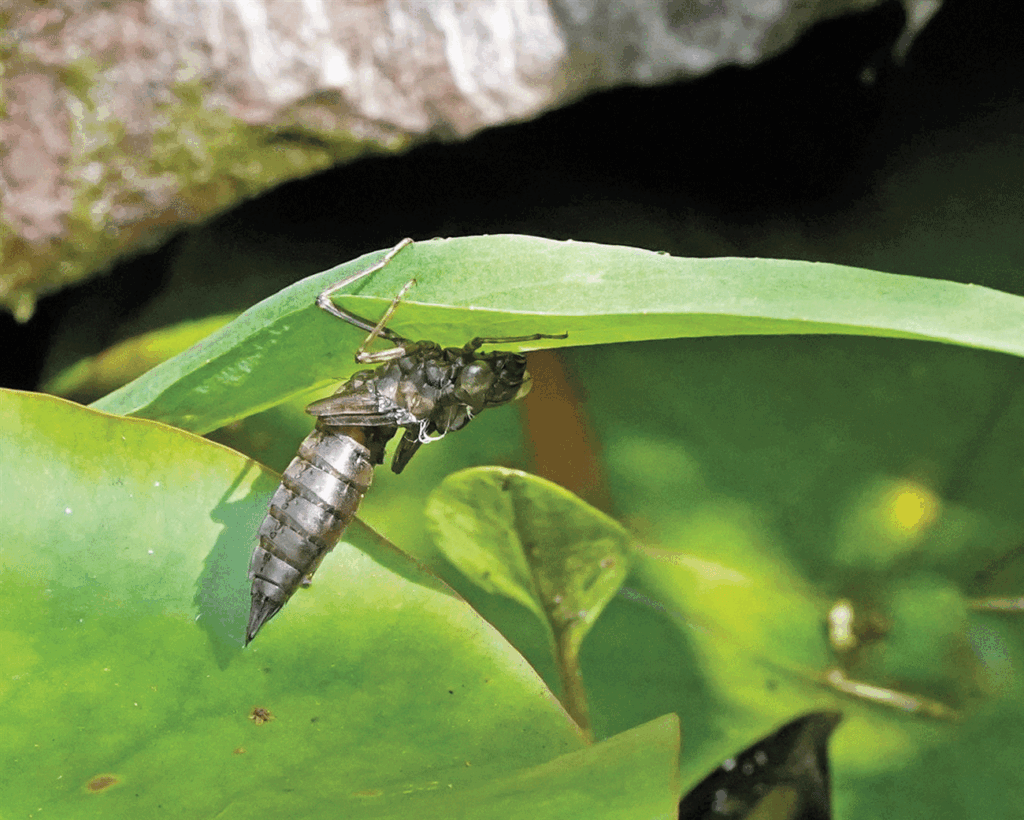
It was fortunate that Mark Matthews was able to come round whilst this drama was going on, and he took the wonderful photos that illustrate this article.
The larva can live up to 5 years in a pond and a poet friend has aptly described them as ‘monsters of the deep’. They are enthusiastically carnivorous and will clear a pond of newts and small fish. Once hatched into dragonflies, they live for up to 8 weeks. They cannot walk but are brilliant fliers. They manoeuvre their double pair of wings to hover and dart, feeding on small insects which they catch whilst in flight with specially adapted limbs. Male dragonflies are very aggressive and territorial. They hold the female by the neck with claspers placed at the end of their abdomen. The pair fly in tandem, making an arc shape, and the female dips the end of her abdomen in the water to lay her eggs.
Dragonflies are the largest flying insects seen in the garden, and it is thought that they were possibly one of the first creatures to develop the ability to fly. Fossil records show that there have been dragonflies for 220 millions years.
The plant in my pond called spearwort which supported the emerging dragonfly larva – is a native aquatic, ranunculus flammula and has an interesting story. The stems can cause large blisters if not carefully handled, and in past times beggars would rub the juice into their skin to raise nasty looking sores to elicit sympathy and alms. Flammula probably refers to the inflammation of the skin – or digestive tract caused by the sap. This plant, and its relative the greater spearwort is dangerous to cattle and sheep.
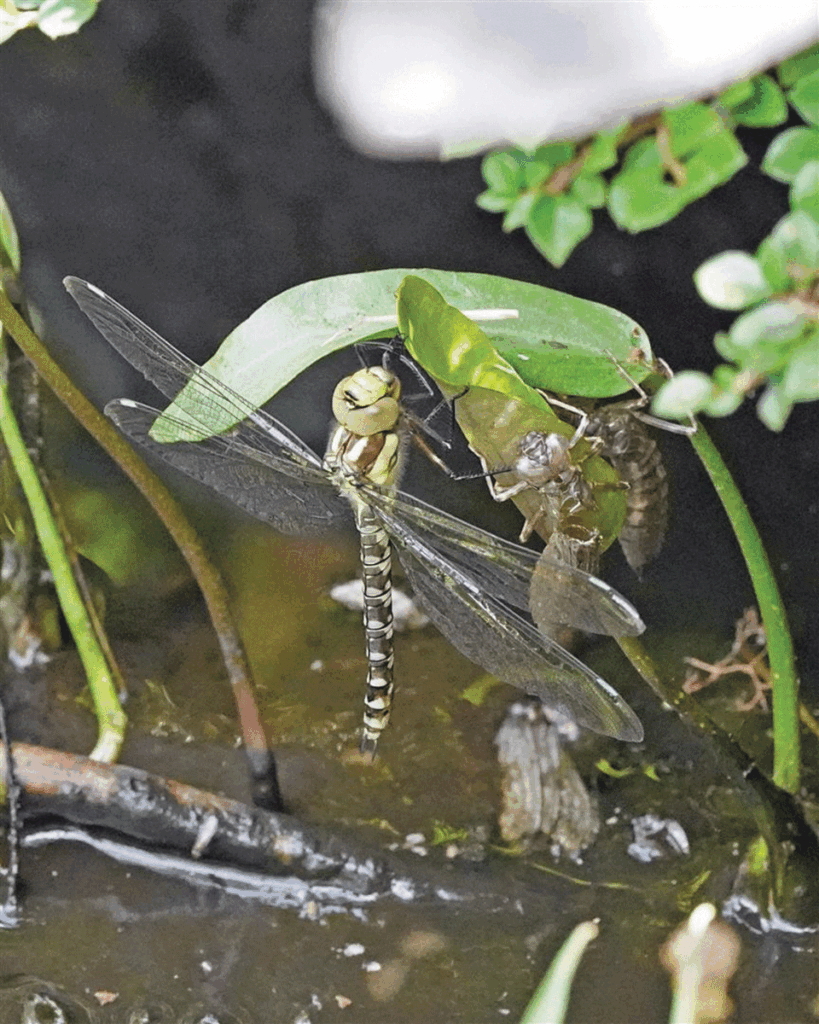
I have 5 different buddleias in my garden – and this year the butterflies have been better than ever. I particularly love red admirals and there have been more than I have ever seen before. Apparently climate change is causing this migratory butterfly to overwinter in the UK. It normally travels up from warmer southern countries in Europe and North Africa to lay eggs in southern Britain. However, many are now overwintering here and that explains the increase in numbers spotted by this year’s Big Butterfly Count between July and August, which also confirms my observations.
There is plenty to do on our conservation site just off Knowle Lane, please come and join us. See below for details of how to volunteer.

